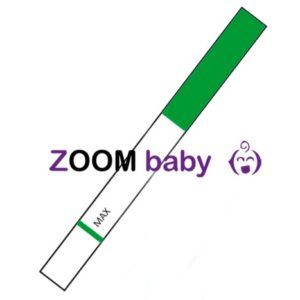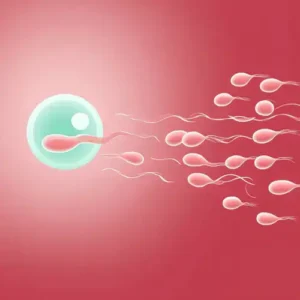Pregnancy test strips have become a popular choice when it comes to home pregnancy testing. They are, after all, the cheapest option when you want to take a pregnancy test. If you are testing frequently, these types of tests are invaluable and save you lots of money over midstream or branded tests. But which ones are best? And why should you choose wide pregnancy test strips? In this article we address these questions and more!
What Are Pregnancy Tests Strips?
Pregnancy tests strips are perfect for confirming pregnancy early on. The strips are dipped into your urine and check for levels of human Chorionic Gonadotropin (hCG), the pregnancy hormone. By using pregnancy test strips, you can confirm your pregnancy as soon as two weeks after fertilisation.
Most strips are supplied with full instructions, making them very easy to use, even for a beginner.
HCG levels and Pregnancy
The levels of pregnancy hormone in your body will start to rise about six to 14 days after fertilisation. Eventually this spike in hCG will be high enough to be detected by your pregnancy test and you will realise that you are pregnant. The speed of this rise in hCG can vary from one woman to the next, as no two women are the same.
Once hCG level reach 10mIU/ml and above, a pregnancy will be able to be picked up by an early pregnancy test. hCG levels of 25mIU/ml and above can be picked up by a regular pregnancy test. Women who are not pregnant will normally have a low hormone reading of about 5mIU/ml.
As pregnancy progresses, hCG levels will continue to rise, doubling every two to three days until they peak at around 8 to 11 weeks. After that, they will begin to gradually decrease and level off for the rest of the pregnancy.
However, it is important to note that hCG levels can vary greatly between pregnancies and even between different women’s pregnancies. A high hCG level does not necessarily mean a healthy pregnancy, as it can be a sign of conditions such as molar pregnancies or ectopic pregnancies. Similarly, a low hCG level does not always indicate a miscarriage, as it can be normal for some women to have lower levels.
Doctors will usually monitor hCG levels in the early stages of pregnancy to ensure they are rising appropriately. If levels are not rising as they should, it may indicate a problem with the pregnancy.
Knowing about hCG levels and what they mean can be helpful in understanding early pregnancy and monitoring the health of the developing foetus. It is important to discuss any concerns or questions with your healthcare provider.

How To Use Pregnancy Test Strips
Pregnancy strips are simple and easy to use. To get you started, you will require the following items:
- A clean container to collect your urine in. A clean cup will do.
- Some pregnancy test strips … of course!
Testing is easy …
- Firstly, you will need to wee into the clean cup or container. Early morning urine will give you the best reading of the day.
- Remove a strip from it cellophane wrapper, making sure no touch the test end of the strip.
- Dip your strip into the container of urine. Make sure that the urine doesn’t creep past the max line on the test strip.
- Take the strip out of the urine. Place the strip onto a clean surface
- Wait for the results
How to Read the Results
After waiting for a few minutes, the results of your test can be observed.
When the pregnancy test strip shows one red line, this means that the test result is negative and you are not pregnant.
When two lines appear, then you could be pregnant. The strength of the lines is not important. Regardless of whether the lines are dark or faint, two lines on the test indicate a pregnancy.
Pregnancy strips can be very reliable and have a high success rate. For an accurate test result, you should always follow the instructions on the package and not deviate from them.
Why Choose Wide Pregnancy Test Strips?
When it comes to pregnancy test strips, size does matter! When we talk about size we mean WIDTH, and it’s very important. The wider the strip, the easier it will be for you to use.
2.5mm or 3.5mm Wide Strips
Generally, in the UK, you will find that the market it dominated by pregnancy test strips that are either 2.5mm or 3.5mm wide. Why is this? Well, the simple answer to this is cost. The 2.5mm wide strips are cheaper to produce because they use about 30% less material than the wider ones. This allows them to be sold at a cheaper prices. Those that are new to pregnancy testing using strips, may be attracted to these types of tests as they are competitively priced. Often the producer will fail to mention that the strips are only 2.5mm wide.
What’s Wrong with 2.5mm Wide Pregnancy Test Strips?
The simple problem with these thin tests is that the are very hard to read. By skimping on the material used to make the test the manufacturers have made them hard to read, due to the reduced surface area.
Size Does Matter!
Wide pregnancy test strips that are premium strips that are easier to read and interpret than thin strips. At Zoom Baby we only ever sell wide test strips as we truly believe that any strip that is less than 3.5mm wide will be a waste of money!
Photo by Anthony Cunningham for Zoom Baby
Zoom Baby is a leading supplier of Pregnancy Tests and Ovulation Test Kits
This post was originally published in 2015. It was last updated in January 2025.





